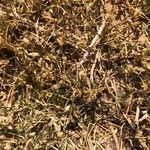Plants with creeping rhizomes 0.5–1 mm thick. Culms 3–42 cm × 0.3–0.6 mm. Leaves: distal leaf sheaths often disintegrating, thinly membranous-translucent, inflated distally, often wrinkled, apex blunt. Spikelets ellipsoid, 1.5–9 × 1–3.5 mm, apex acute to acuminate; proximal scale without flower, not amplexicaulous; floral scales to 65, 5–7 per mm of rachilla, loosely appressed to appressed, elliptic, 1–3 × 0.4–1.6 mm, membranous, apex acute. Flowers: perianth bristles (0–)5–8, typically 7, white to stramineous, spinules dense to few; styles 2-fid, rarely 3-fid. Achenes stramineous to green or dark brown, biconvex, rarely trigonous, obovoid to obpryiform, 0.4–1.1 × 0.3–0.8 mm, very finely reticulate at 40X. Tubercles whitish to stramineous or green, 0.2–0.7 × 0.2–0.4 mm, apex acute to acuminate.


